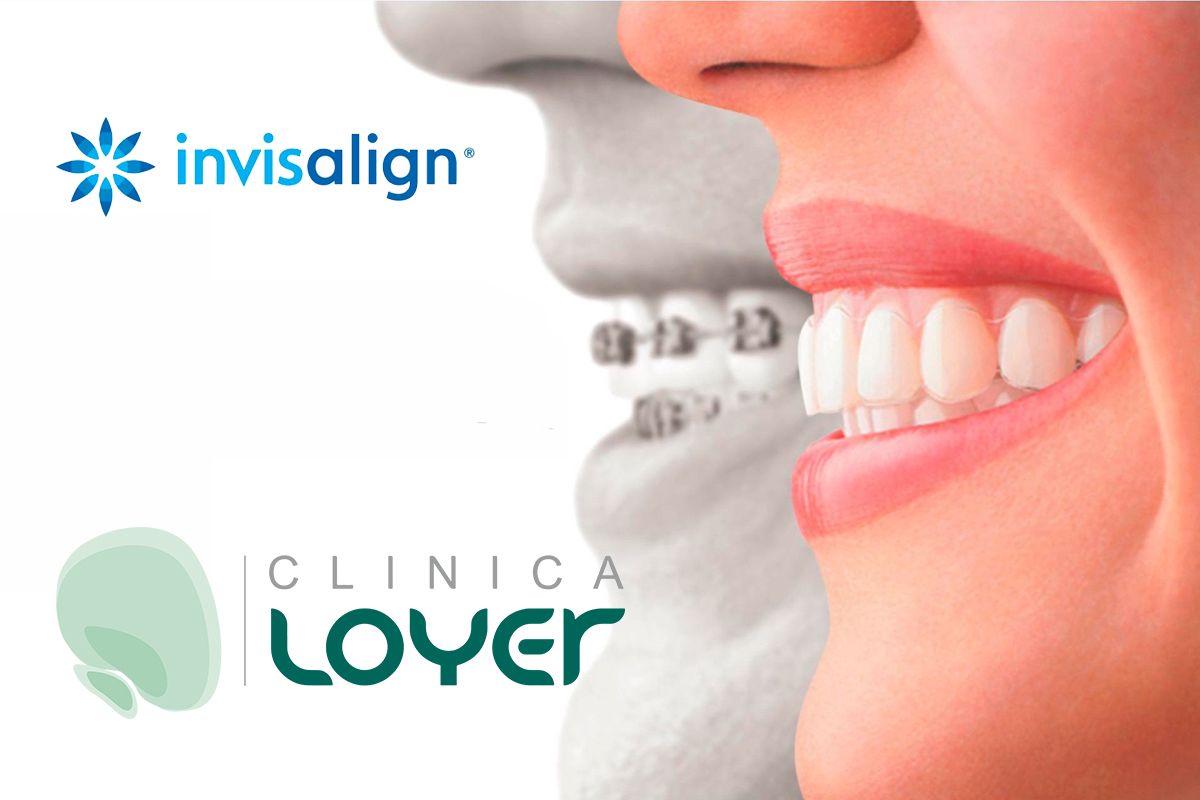INVISALIGN
It is orthodontics because it moves teeth following a thorough and predetermined treatment plan. It is digital because it is supported by a very accurate virtual program of dental movements and of sequence of movements resulting in a huge clinical effectiveness. It is transparent because it uses special plastic plaques (like those formerly used to whiten the teeth), almost invisible. These plaques are generically named aligners, even though the elicit a much more complex movement than just aligning teeth. They can perform almost every orthodontic movement.
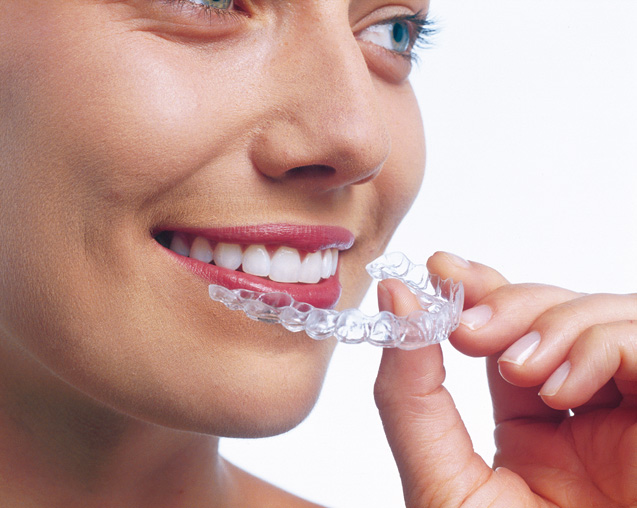
Every orthodontist has the possibility to use the clear aligner system that better suits his/her professional goals. There are several trade marks in the market. We have chosen Invisalign due to its unsurpassable technology, clinical support and clinical data base worldwide. With Invisalign we can make exhaustive diagnosis and perform treatment plans directly in 3D virtual models of the dental arches with both a detail and predictability formerly unknown in the history of orthodontics. At the beginning of 2019, 6 million people had been treated with Invisalign worldwide. There is a clinical gallery of 600 cases diagnosed and treated with Invisalign in approximately 40 countries around the world. Today Invisalign is in 90 countries. Patients and orthodontist have access to this gallery. We can choose a case like yours among them and be provided with the detailed treatment plan that was done in that person. This gallery is absolutely anonymous, and no names or face photographs are included. The universalization of the Contemporary orthodontic knowledge has allowed a great advancement of all and any type of cases using Invisalign clear aligners.
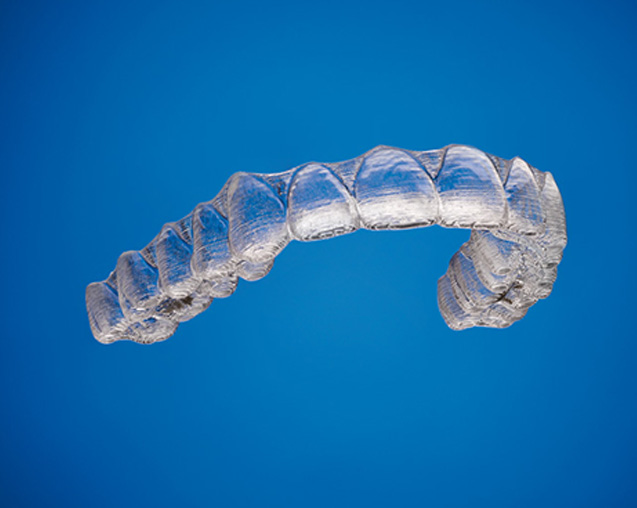
It is about using the aligners 22 hours a day. They should be removed in order to eat, drink hot liquids, and perform dental and gum cleaning. Once the final virtual treatment plan in the computer is approved by the patient, the orthodontists receives all the aligners of that treatment, and gradually gives them to his/her patients. Aligners can be used 1 week, 10 days and 14 days, depending on how long the patient uses them daily and how complex are the dental movements to be performed. If the patient is compliant, the treatment-period could be shortened even to half of the original length with a one- week period use for every pair of aligners.

- Aligners are very comfortable.
- They are almost invisible.
- They neither impede nor make difficult to speak.
- They are easily cleaned.
- They are made of a scientifically tested non-toxic plastic.
- Invisalign offers to its doctors a software that enables us to do a very complete diagnosis, and to perform a unique and quite efficient treatment.
- The orthodontist should have a clear vision of the final state of the treatment from the very beginning, since there shall be not many unexpected situations. For this purpose, the final stages of the treatment are visualized in 3D.
- With very few exceptions, practically there is no pain during or after the treatment using Invisalign. When any problem exists, the sensation becomes closer to a discomfort than to pain.
- In case the treatment did not totally go as expected, some treatment modalities allow you to request for more aligners, called generically, additional aligners. The most complete modalities of treatment (Teen, Full) give a far more extended period of refinement of the treatment with additional aligners.
- There is no gum inflammation, deformation or exaggerated growth of it.
- Sports can be performed without fearing trauma and excessive damage to the teeth, to the lips or to the mucous membranes of the mouth. This protection given by the aligner works also in case of an accident.
- In children and adolescents, the use of aligners does not elicit bullying, since they are almost invisible. Extraoral arches or chincups are not used with Invisalign aligners.
- There are no scratching or wounding objects in the aligners that might damage the oral mucosa. Eventual aligner polishing sometimes is required.
- There are no food restrictions once the patient takes out the aligners to eat.
- In very special moments, they can be removed for a couple of hours.
- There are practically no emergencies (no bracket loss).
- They are frequently replaced with a new pair of aligners.

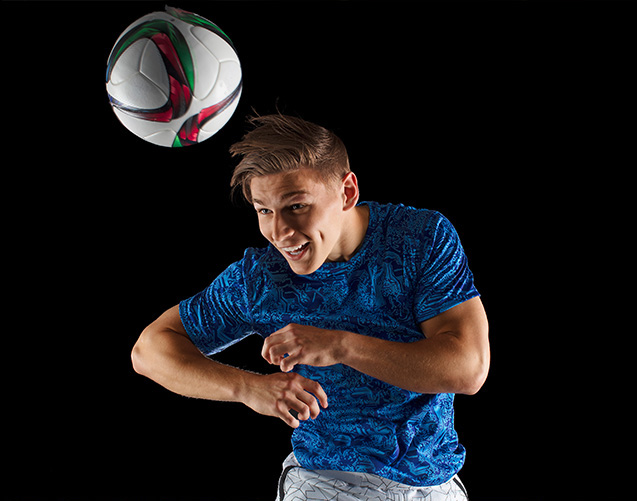
Yes, it is very effective in treating adults of any age. Limitations might have a periodontal cause (quantity and quality of bone around the teeth) that not necessarily has a direct relation with age. From the 6 million cases treated using Invisalign around the world, 4.7 million have been adult patients. We consider adolescents as part of the adult group in the sense that their mandibular bone and maxillary are not modified with such intensity by the growth of pre-pubescents and pubescents.
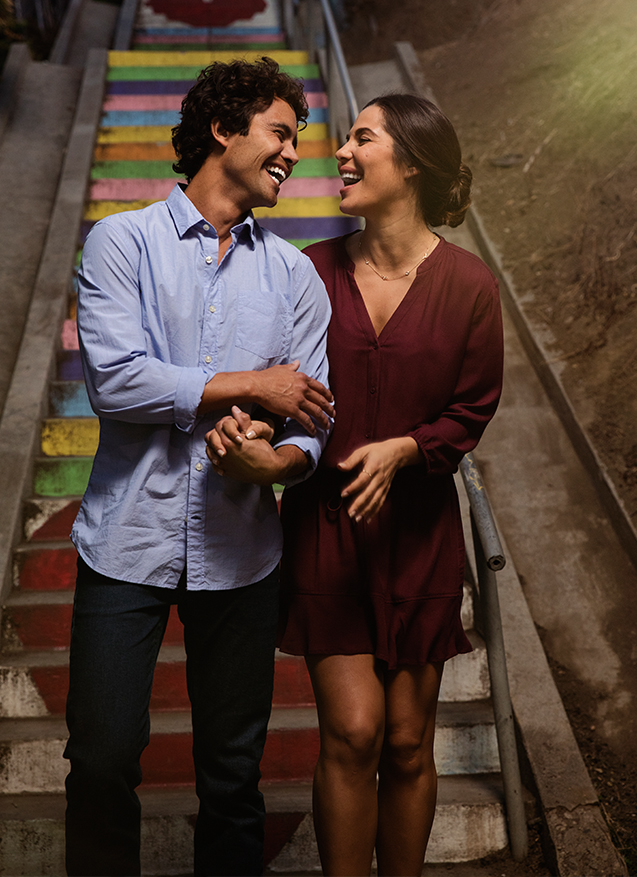
Not only it is possible, but there is scientific and clinical evidence that is nowadays totally accessible. Form the 6 million treated cases in the world, 1.2 million are children treated with Invisalign. Children with shorter mandibles than maxillaries (Class II) can be very well treated and very possibly be helped the mandible to grow forward. Children with larger mandibles than maxillaries can also be treated by slowing the mandibular growth. Also, children with none of these major osseous discrepancies, but with problems of teeth alignment, open bite, closed bite, etc. can also be very successfully treated.

It is important to have the first definitive molars, and hopefully the two canines. Premolars should be in their way of eruption. We are talking approximately about children of 9 years old and up. In any case, each possibility of treatment must be studied in a personalized way.

Not at all. It is impossible. The Invisalign system of clear aligners is the best instrument in the worldwide market for orthodontics. But in order to function efficiently it requires an orthodontic thought backing it up. It also requires a complete initial vision of what the treatment would be at the end. This can only be done by the orthodontist. The Invisalign people that generate the virtual dental movement, in the computer screen, they are very well trained informatic technicians. But they are not orthodontists. What can be done in the virtual model should be evaluated by the orthodontist. Finally, the orthodontist is the one that should respond for the outcome of the treatment, taking for granted that the patient was totally compliant in using the aligners. The Invisalign system has no capacity to do orthodontic treatment by itself, independently from the orthodontists.
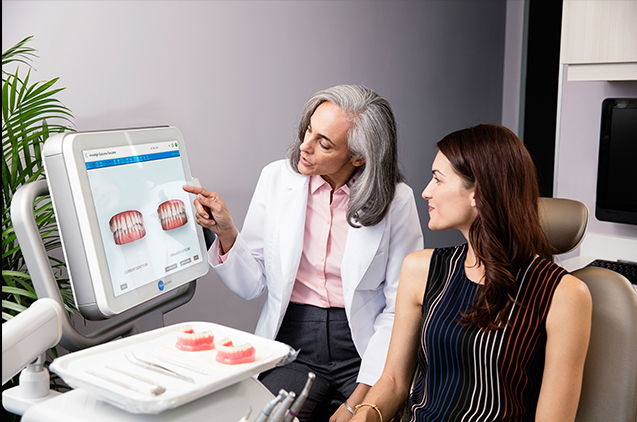
It is necessary that you set a one-hour appointment with the orthodontist. A personalized initial diagnosis is made for your case. Then both the general and specific treatment goals you might have as a patient are discussed. Important aspects to be considered are the aesthetics of the teeth, the profile and the face. Also, necessary aspects for a correct functioning of your masticatory system are considered. Aspects related to other type of treatment you might be undergoing in that moment the need to generate a treatment sequence from other specialties in relation to the orthodontic treatment. In other words, a sequence is given to you as on how to pursue the interdisciplinary results you might be interested in. In this appointment, a budget is made according to the complexity of the Invisalign treatment is proposed to you. Your personal goals are considered in equal measure with the goals of the orthodontist in order to completely characterize the final treatment result.

Once the initial orthodontic appointment was done, and you have decided to receive the treatment, a complete orthodontic diagnosis of your case must be performed. This means to do a detailed clinical orthodontic examination. It is important to analyze your teeth X-rays, and to measure distances and angles in your Ceph X-Ray. A clinical examination of your masticatory and cranial muscles, teeth and TMJ is mandatory in order to identify possible dysfunctional and pain related problems that might go against the results of the orthodontic treatment. We should check your body posture in order to avoid future problems while ending the orthodontic treatment. It is essential to keep a very good buccal hygiene, as well as to eliminate cavities, and periodontal problems before starting the treatment.
Summary:
- 1.- Initial clinical diagnosis of the first orthodontic appointment.
- 2.- Once you decide to do the treatment another appointment is made with a complete clinical examination in order to fill up an orthodontic record.
- 3.- In that same appointment intraoral and facial clinical photos in different angles are taken.
- 4.- Superior and inferior impressions to be sent by fast courier to Invisalign.
- 5.- X-Rays are requested and then analyzed in detail. An internal report of the findings is used to generate your personalized treatment plan.
- 6.- Orthodontic concepts and your own goals as a patient are applied to the virtual models of your teeth sent by Invisalign via computer in order to start progressively generating your final treatment plan.

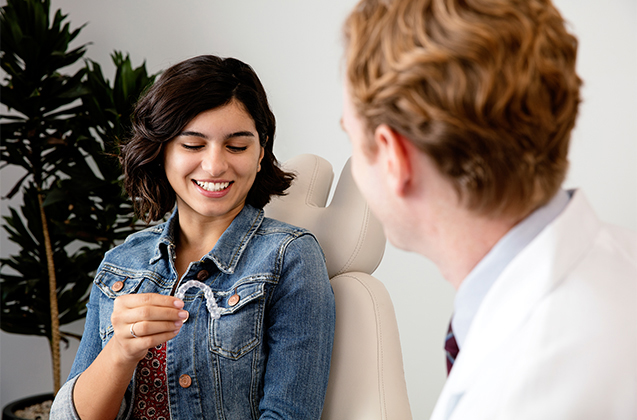
- The impressions of your teeth go to Invisalign, they are digitalized, and the dental arches are transformed in a virtual 3D model.
- All the information is loaded to the Invisalign software. They process it in order to send a first treatment proposal for your dental arches now seen in 3D.
- The orthodontist puts together the patient’s goals with his own professional goals in order to generate, after several modifications, the final treatment plan.

Aligners are not the only way, even though they are most important. Attachments are also used. These are small volume of composite resin (normal esthetic material for feelings) that adhere very strongly to the dental surface. The have the same color of the teeth. These attachments are later enveloped by the aligners that have a bubble that mimics the shape of the attachment. Attachments are installed form the second pair of aligners and usually they are removed at the end of the treatment.
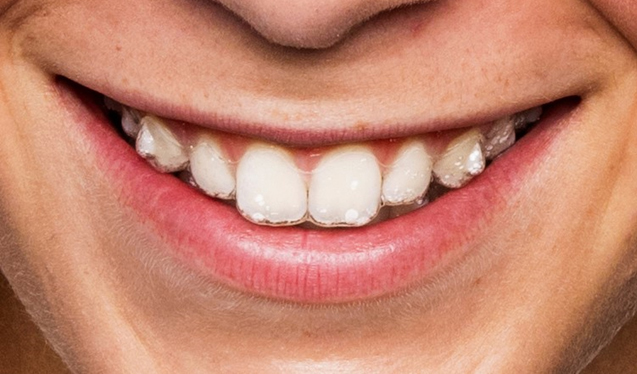
- 1. In the Clinic Loyer website:
- A. Four videos of Rodrigo Loyer’s interview in a TV program (10’ each):
- – Video 1. General comments about Invisalign. Gives a very ample general view. Click here.
- – Video 2. How the Invisalign digital system works. Click here.
- – Video 3. A patient’s Invisalign experience.
- – Video 4. Contemporary Orthodontics and other medical specialties. Click here.
- B. Introductory video that presents the Invisalign System created by Align Company. Click here.
- C. Informative brochures:
- – C1. For women click here
- – C2. For men click here
- – C3. For children click here
- D. Frequently asked questions in this page click here.
- 2. Having an initial appointment with a specialized doctor click here.
- 3. In www.invisalign.cl
- 4. In www.invisalign.com
- 5. You can also enter the international case gallery of Invisalign, and find a case similar to yours. Click here. https://global.invisaligngallery.com/treatments/
- 6. Letter commemorating the 6 million people treated with Invisalign. Click here.
